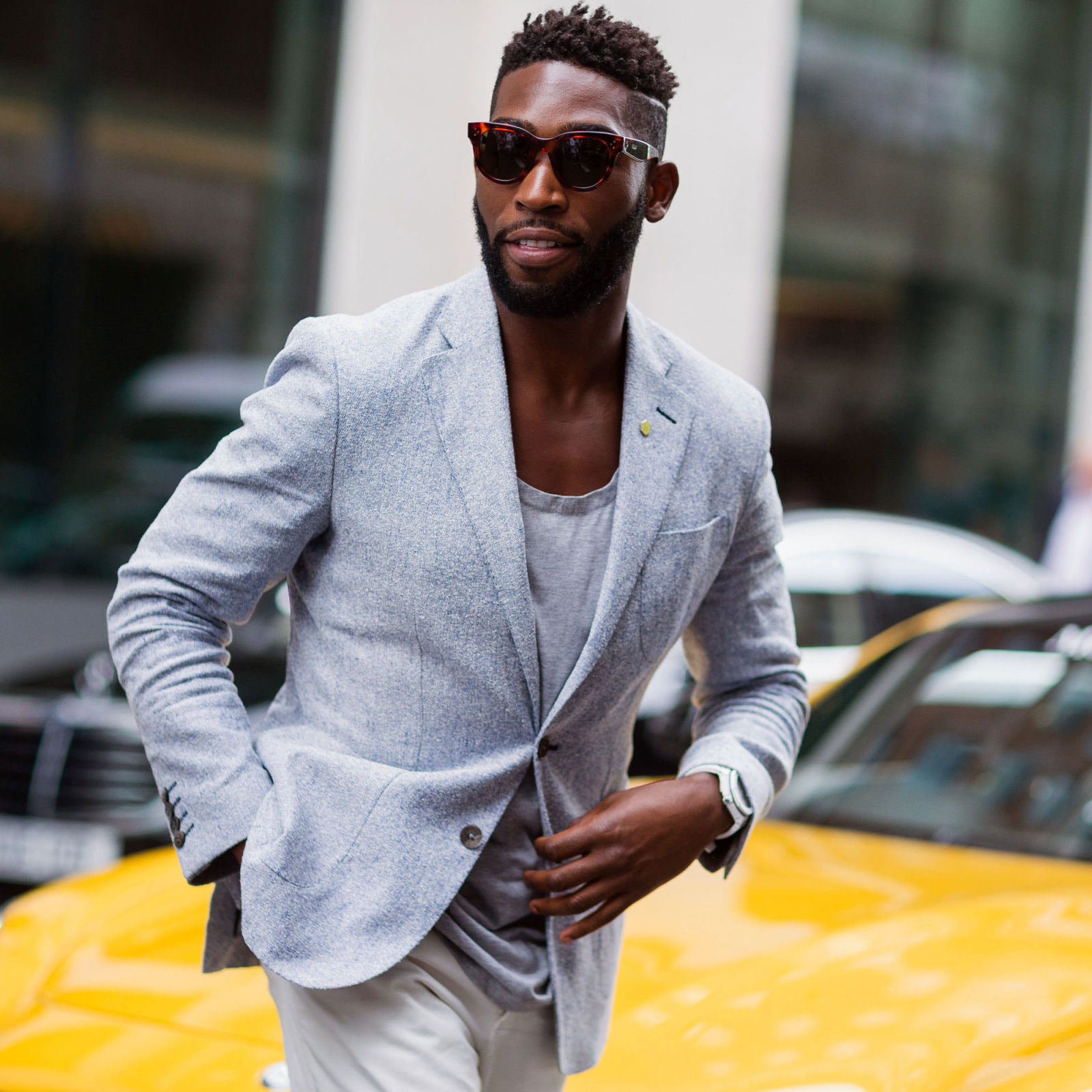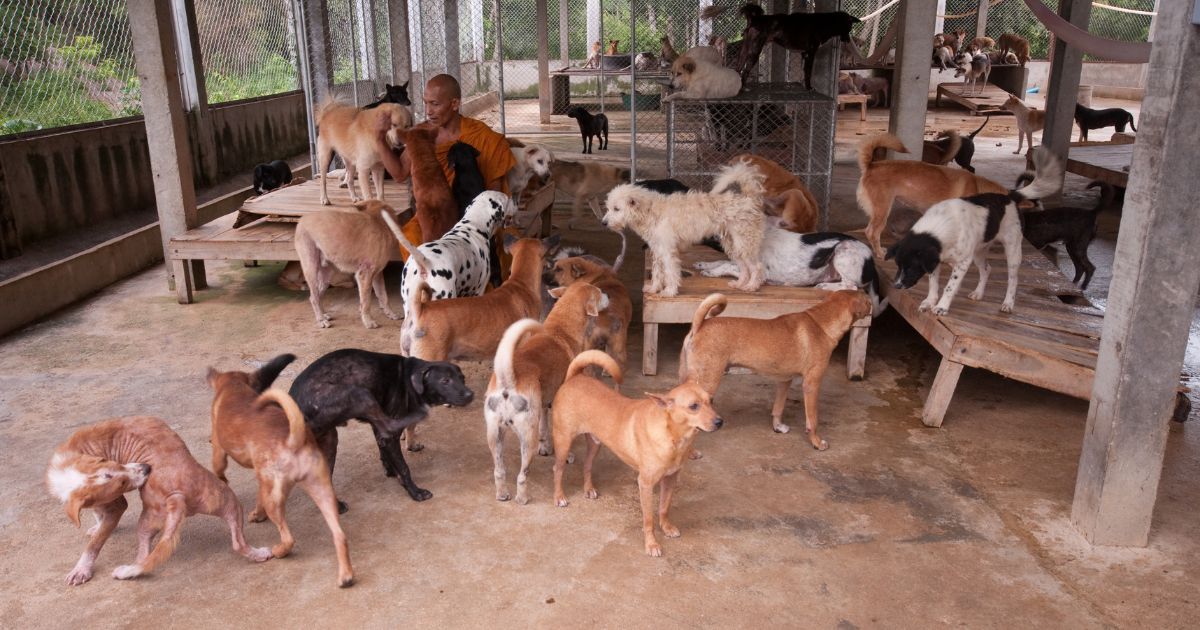1. Boxer
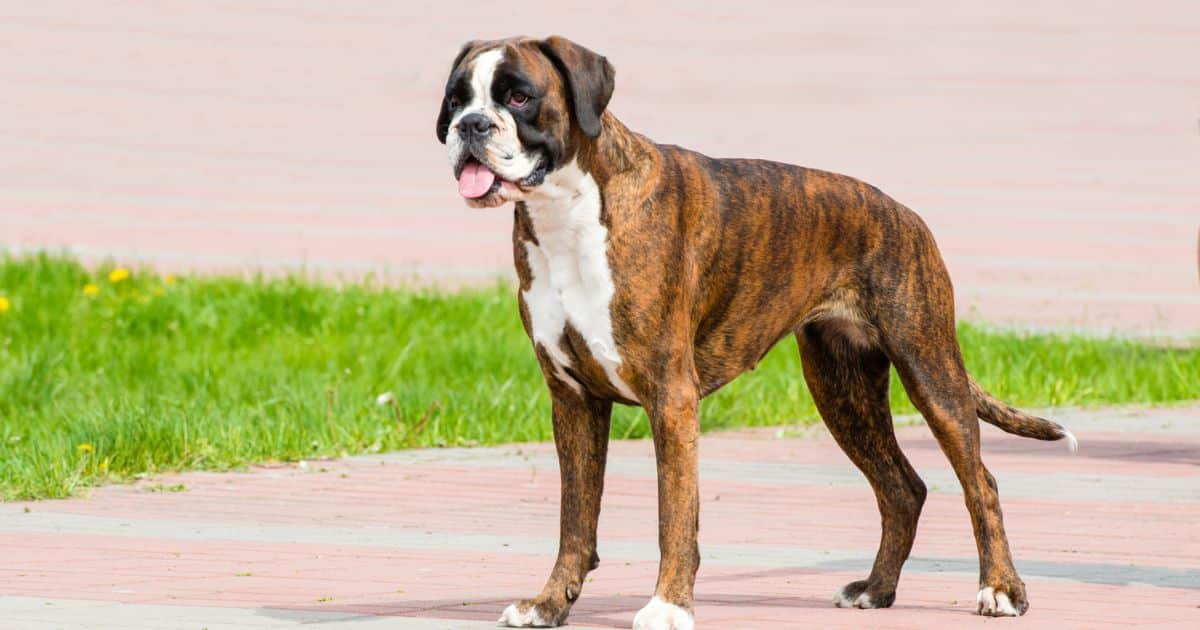
Boxer:
| Origin | Germany |
| Lifespan | 9–10 years |
| Height | 22–27 inches |
| Weight | 80–135 pounds |
The Boxer is a medium to large-sized breed known for its strong, muscular build and playful personality. Originally developed in Germany, Boxers are intelligent, energetic, and loyal dogs that make excellent family companions. Their distinctive appearance, characterized by a square jaw and a strong bite, sets them apart in the canine world. Proper training, socialization, and regular exercise are essential for ensuring a well-behaved and happy Boxer.
2. German Boxer

German Boxer:
| Attribute | Details |
|---|---|
| Origin | Germany |
| Lifespan | 9–10 years |
| Height | 22–27 inches |
| Weight | 80–135 pounds |
The German Boxer is a breed originating from Germany, known for its distinct appearance and friendly temperament. With a lifespan typically ranging from 9 to 10 years, these dogs are of medium to large size, measuring between 22 to 27 inches in height. In terms of weight, German Boxers usually weigh between 80 to 135 pounds. Known for their loyalty and intelligence, they make excellent family pets with proper training and socialization.
3. American Boxer
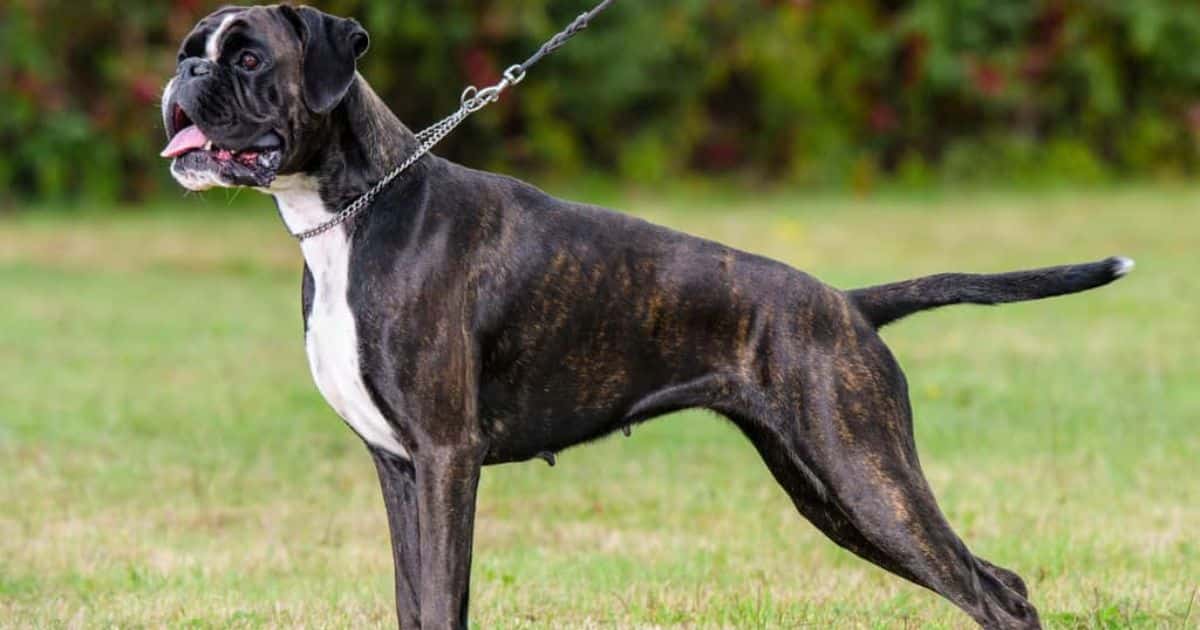
American Boxer:
| Characteristic | Description |
|---|---|
| Origin | United States |
| Lifespan | 9–12 years |
| Height | 21–25 inches (at the shoulder) |
| Weight | 50–80 pounds |
| Coat | Short, smooth, and tight-fitting |
| Colors | Fawn or brindle |
| Temperament | Energetic, playful, and loyal |
| Intelligence | High |
| Trainability | Good |
| Exercise Needs | Moderate to high |
| Health Issues | May be prone to certain genetic conditions, including hip dysplasia and heart issues |
4. European Boxer
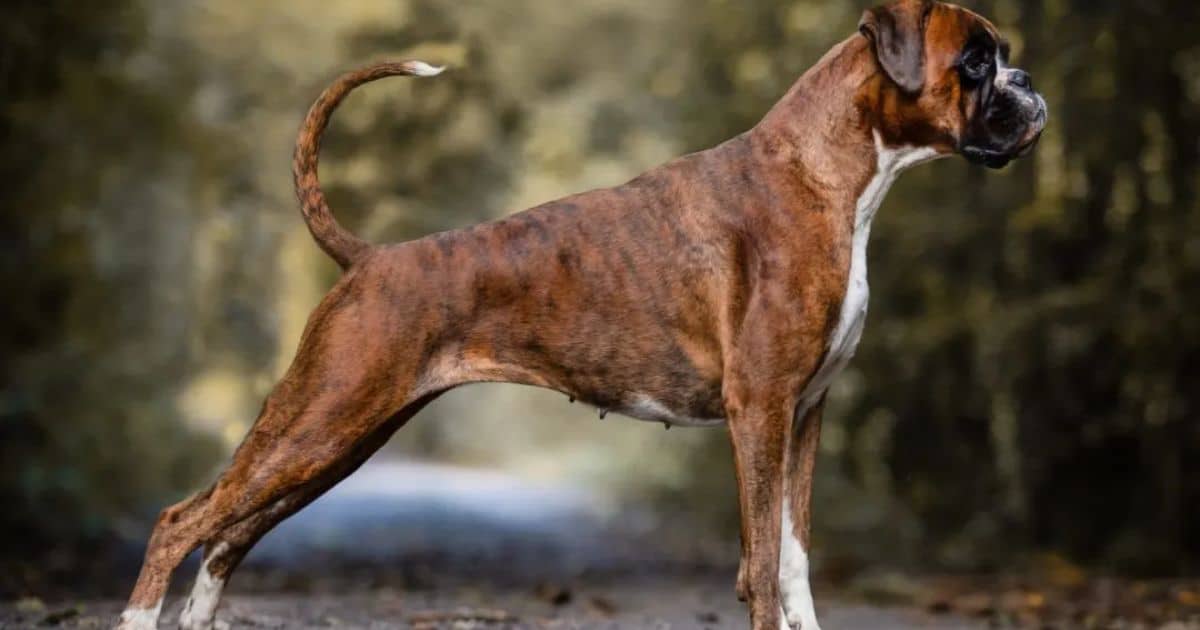
European Boxer:
| Origin | Europe |
|---|---|
| Lifespan | 9–11 years |
| Height | 21–25 inches (at shoulder) |
| Weight | 55–75 pounds |
| Temperament | Loyal, Energetic, Playful |
| Coat | Short, Smooth |
| Colors | Brindle, Fawn, White |
| Exercise Needs | High |
| Training | Responsive, Obedient |
| Health Issues | Prone to certain genetic conditions; regular vet check-ups recommended |
| Special Considerations | Requires regular exercise and mental stimulation; benefits from socialization and consistent training |
5. White Boxer

6. Brindle Boxer
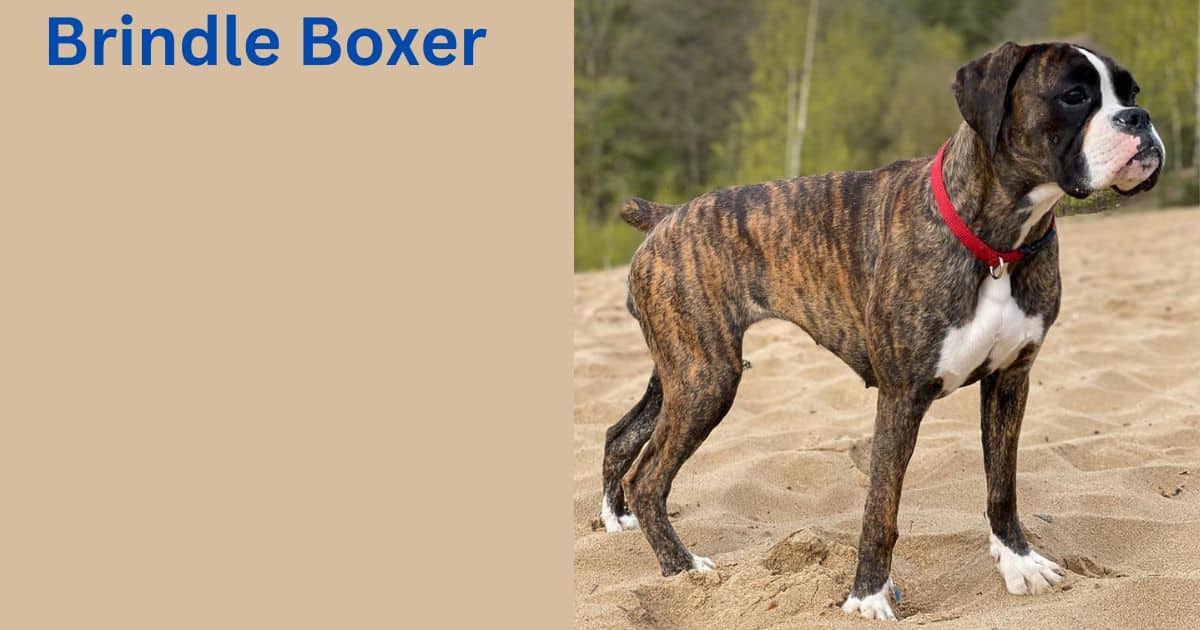
Brindle Boxer: The Brindle Boxer is a specific coat color variation within the Boxer breed. While the standard Boxer coat can come in various colors, including fawn and white, brindle is a distinctive pattern that features tiger-stripe markings on a fawn background. Brindle Boxers are known for their striking appearance and are quite popular among Boxer enthusiasts.
Characteristics:
- Coat Color: Brindle pattern on a fawn background.
- Temperament: Energetic, intelligent, loyal, and friendly.
- Size: Medium to large-sized dog.
Physical Attributes:
| Attribute | Range |
|---|---|
| Lifespan | 9–10 years |
| Height | 22–27 inches |
| Weight | 80–135 pounds |
| Coat Color | Fawn background with brindle pattern |
| Temperament | Energetic, intelligent, loyal, friendly |
7. Reverse Brindle Boxer
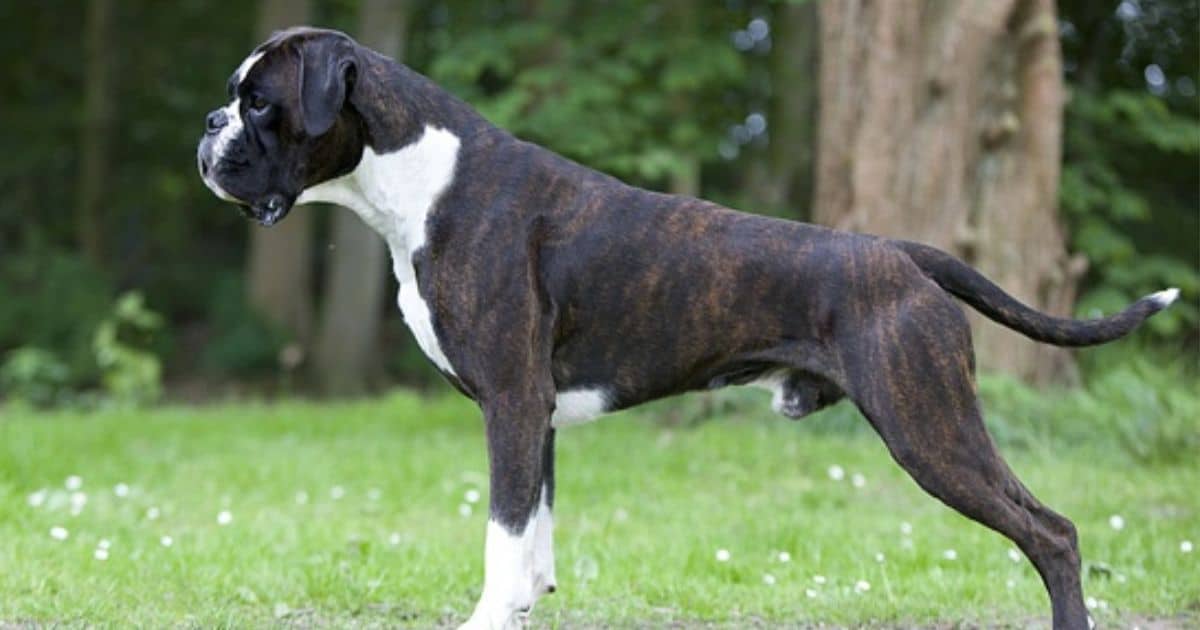
Reverse Brindle Boxer:
- Origin: Germany
- Coat Color: The term “reverse brindle” refers to a dark background coat with lighter brindle stripes.
- Temperament: Like other Boxers, reverse brindle Boxers are known for their playful and energetic nature. They are loyal, intelligent, and make excellent family pets.
- Physical Characteristics:
- Lifespan: 9–10 years
- Height: 22–27 inches
- Weight: 80–135 pounds
- Appearance: The reverse brindle coat is characterized by a darker base color with prominent lighter stripes. This coat pattern gives them a distinctive and striking appearance.
- Exercise Needs: Boxers, including reverse brindle ones, are an active breed that requires regular exercise to keep them physically and mentally stimulated.
- Training: They are generally eager to please and respond well to positive reinforcement training methods. Early socialization and consistent training are essential for a well-behaved reverse brindle Boxer.
8. Fawn Boxer

Fawn Boxer:
| Characteristic | Information |
|---|---|
| Origin | Germany |
| Lifespan | 9–10 years |
| Height | 22–27 inches |
| Weight | 80–135 pounds |
| Coat Color | Fawn (tan with a black mask) |
| Temperament | Energetic, playful, loyal |
| Exercise Needs | High |
| Grooming Needs | Low |
| Trainability | Intelligent, eager to please |
| Common Health Issues | Aortic Stenosis, Hip Dysplasia, and Cancer |
Fawn Boxers are known for their distinctive tan coat with a black mask. They originate from Germany and are characterized by their high energy levels, playfulness, and loyalty. With a height ranging from 22 to 27 inches and a weight of 80 to 135 pounds, they are a medium to large-sized breed. Fawn Boxers are intelligent and eager to please, making them trainable with the right approach. While they have low grooming needs, their exercise requirements are high, necessitating regular physical activity to keep them happy and healthy. It’s essential for owners to be aware of common health issues such as Aortic Stenosis, Hip Dysplasia, and Cancer that may affect the breed.
9. Red Boxer
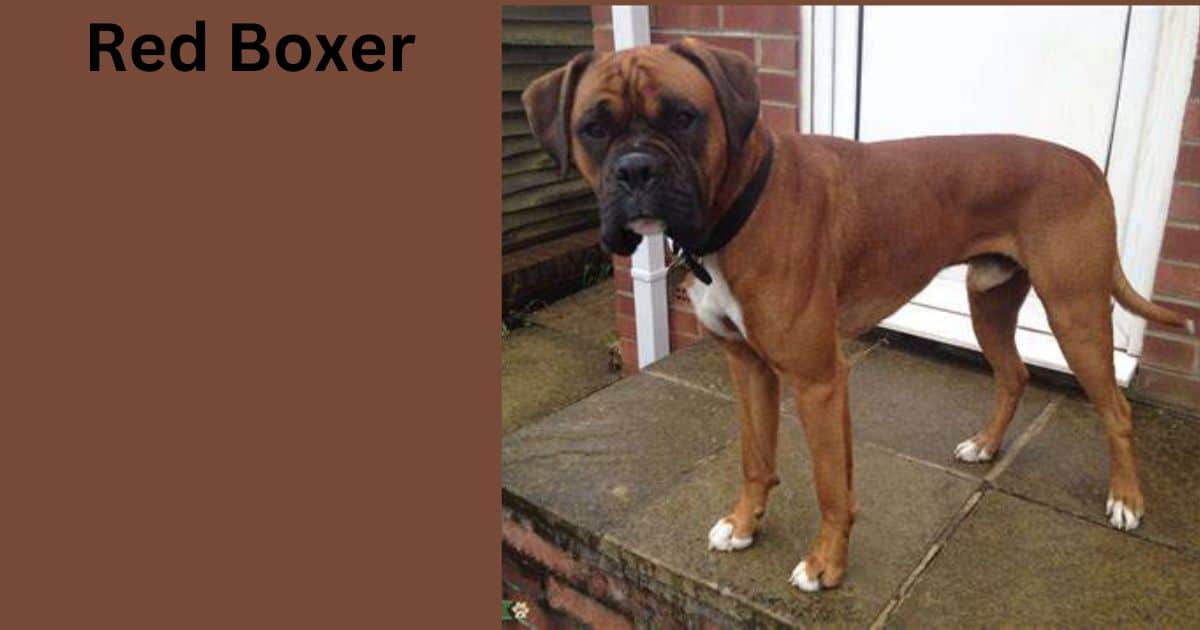
- Origin: Germany
- Lifespan: 9–10 years
- Height: 22–27 inches
- Weight: 65–80 pounds
- Coat Color: Red (rich mahogany or dark tan)
- Temperament: Loyal, energetic, friendly
- Exercise Needs: High
- Grooming Needs: Low to moderate
- Trainability: Intelligent, responsive
- Common Health Issues: Aortic Stenosis, Hip Dysplasia, Cancer
10. Sealed Brindle Boxer
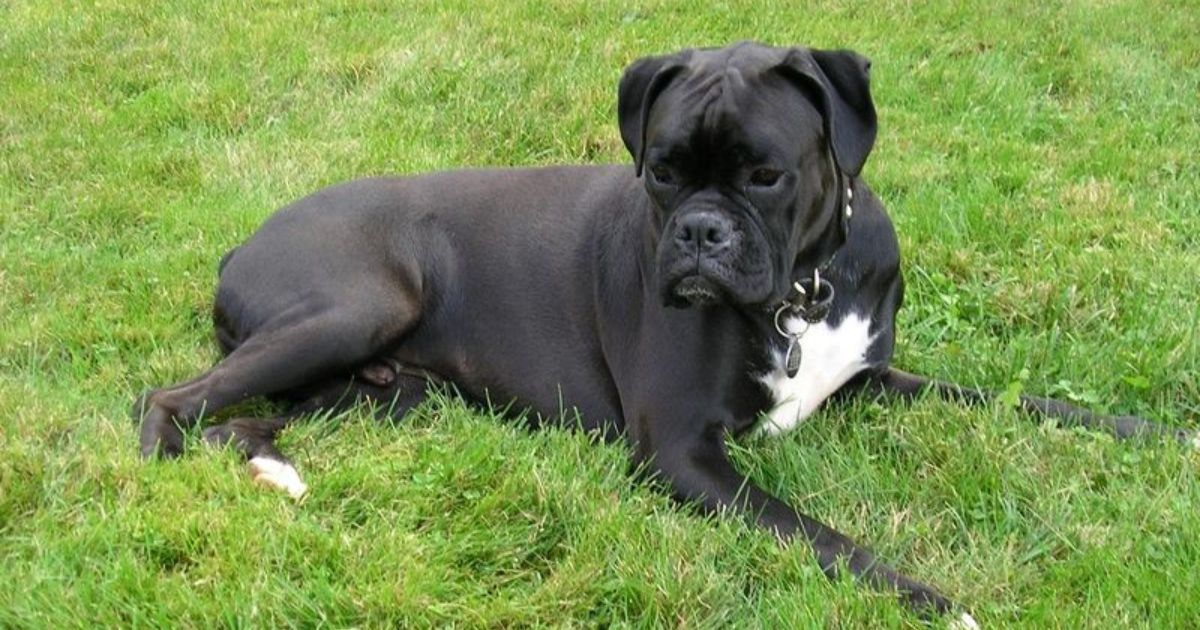
11. English Boxer
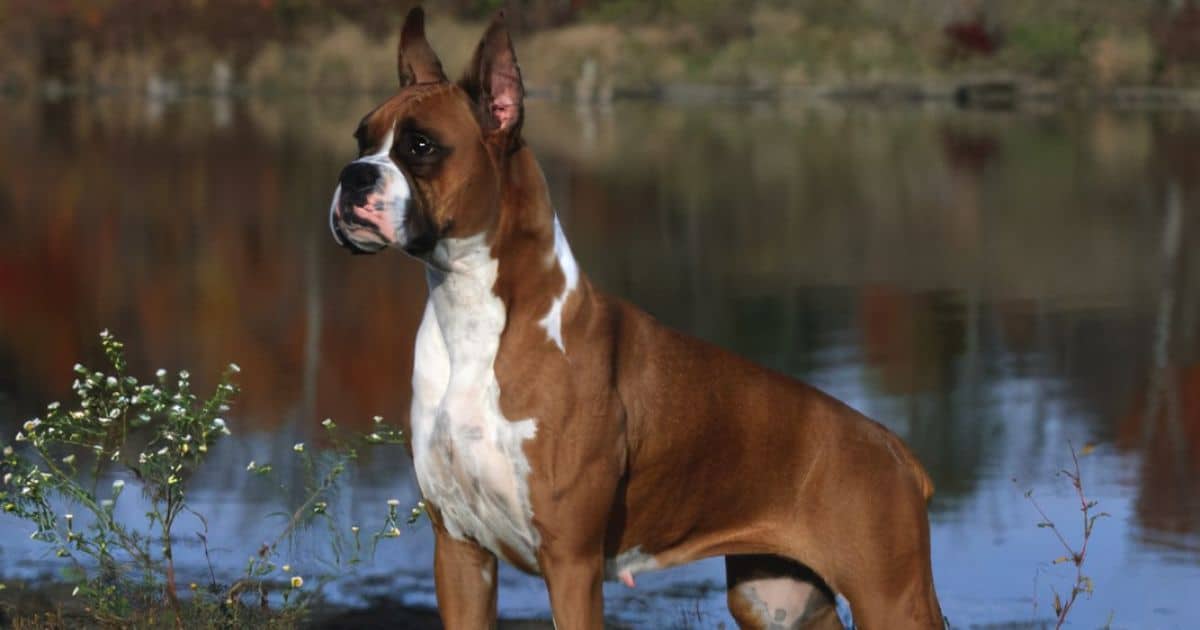
12. French Boxer

| Characteristic | Information |
|---|---|
| Origin | France |
| Lifespan | 10–12 years |
| Height | 21–25 inches |
| Weight | 55–75 pounds |
| Size | Medium to Large |
| Coat Type | Short and Smooth |
| Coat Colors | Fawn or Brindle |
| Temperament | Playful, Energetic, Loyal |
| Intelligence Level | High |
| Exercise Needs | Moderate to High |
| Training Difficulty | Moderate |
| Good with Children | Yes |
| Good with Other Pets | Yes |
| Health Concerns | Prone to certain heart and joint issues |
| Grooming Requirements | Low |
13. Miniature Boxer

| Attribute | Information |
|---|---|
| Origin | Not a recognized breed; sometimes referred to as a smaller version of the standard Boxer. Origin may vary based on breeding practices. |
| Lifespan | Varies, typically around 10–12 years. |
| Height | 12–18 inches at the shoulder. |
| Weight | 25–50 pounds, depending on individual size and genetics. |
| Coat Color | Varied, can resemble standard Boxer coat colors (fawn, brindle, etc.). |
| Temperament | Often described as energetic, playful, and affectionate. Can be good family companions. |
| Health Concerns | Similar to standard Boxers, potential for breed-specific health issues. Regular veterinary check-ups are essential. |
| Exercise Needs | Moderate to high. Regular exercise is crucial for mental and physical well-being. |
| Training | Intelligent and trainable, but may display stubbornness. Consistent positive reinforcement is recommended. |
| Common Uses | Companion dogs, suitable for families and individuals with an active lifestyle. |
14. Bullenbeisser

| Origin | Germany |
|---|---|
| Lifespan | 9–10 years |
| Height | 22–27 inches |
| Weight | 80–135 pounds |
The Bullenbeisser, originating from Germany, is a now-extinct breed that played a significant role in the development of the modern Boxer. It was a powerful and muscular dog with a strong build, known for its hunting abilities and strength.
Historical Significance: The Bullenbeisser was originally bred for hunting large game, such as bears and boars. Its tenacity, strength, and courage made it an excellent hunting companion. Over time, the Bullenbeisser contributed to the creation of the Boxer breed, inheriting many of its distinctive traits.
Physical Characteristics: The breed exhibited a well-built body, characterized by a broad head, strong jaws, and a short, smooth coat. Their height ranged from 22 to 27 inches, and they weighed between 80 to 135 pounds. These physical traits showcased the Bullenbeisser’s power and agility.
Extinction: Unfortunately, the Bullenbeisser faced a decline in population, eventually leading to its extinction. Despite this, its legacy lives on through its influence on the development of other breeds, particularly the Boxer, which inherited many of the Bullenbeisser’s positive traits.
15. Danziger Boxer
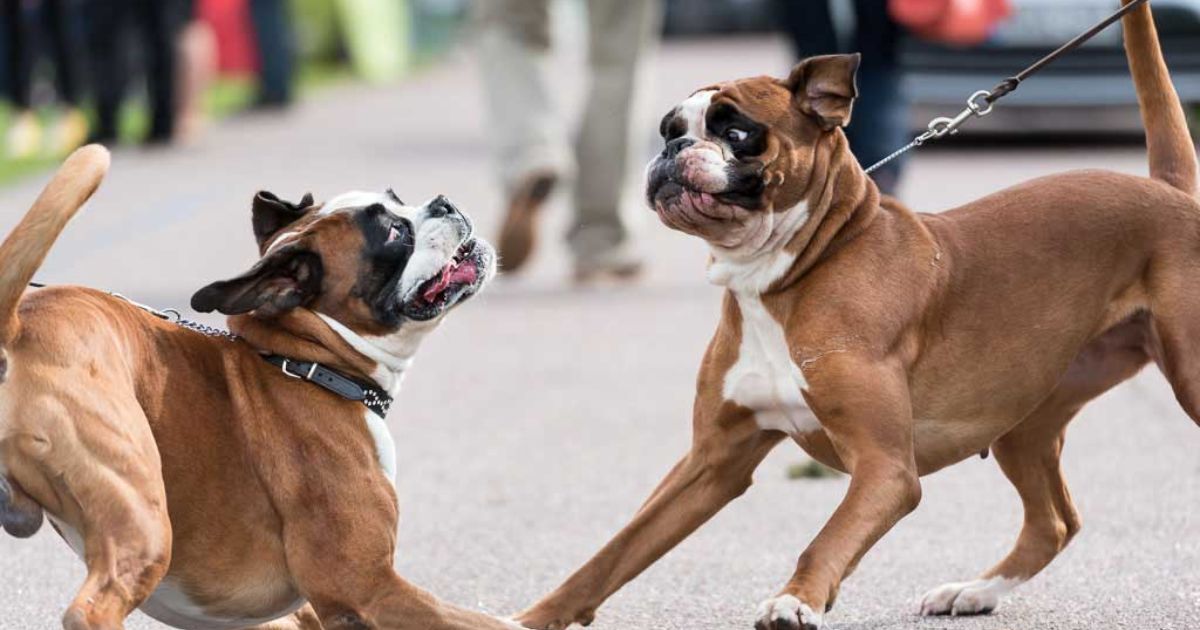
Danziger Boxer:
| Origin | Germany |
| Lifespan | 9–10 years |
| Height | 22–27 inches |
| Weight | 80–135 pounds |
The Danziger Boxer is a breed with origins in Germany. It typically has a lifespan of 9 to 10 years. In terms of size, the Danziger Boxer stands at a height ranging from 22 to 27 inches and weighs between 80 to 135 pounds.
16. Old English Bulldog
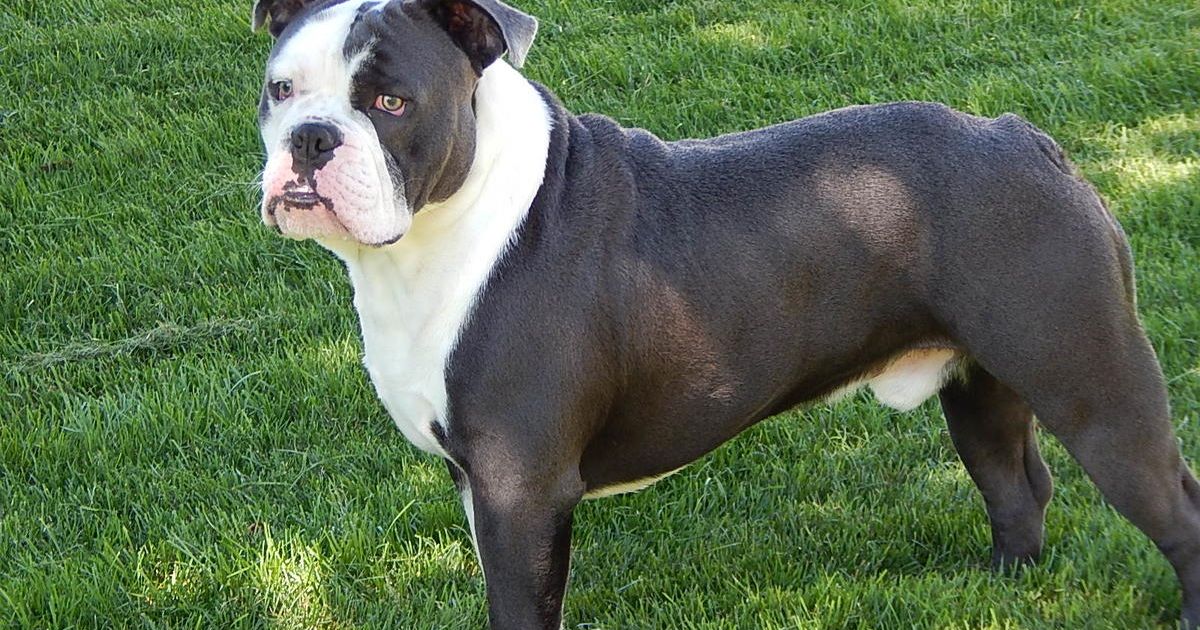
17. Boston Boxer
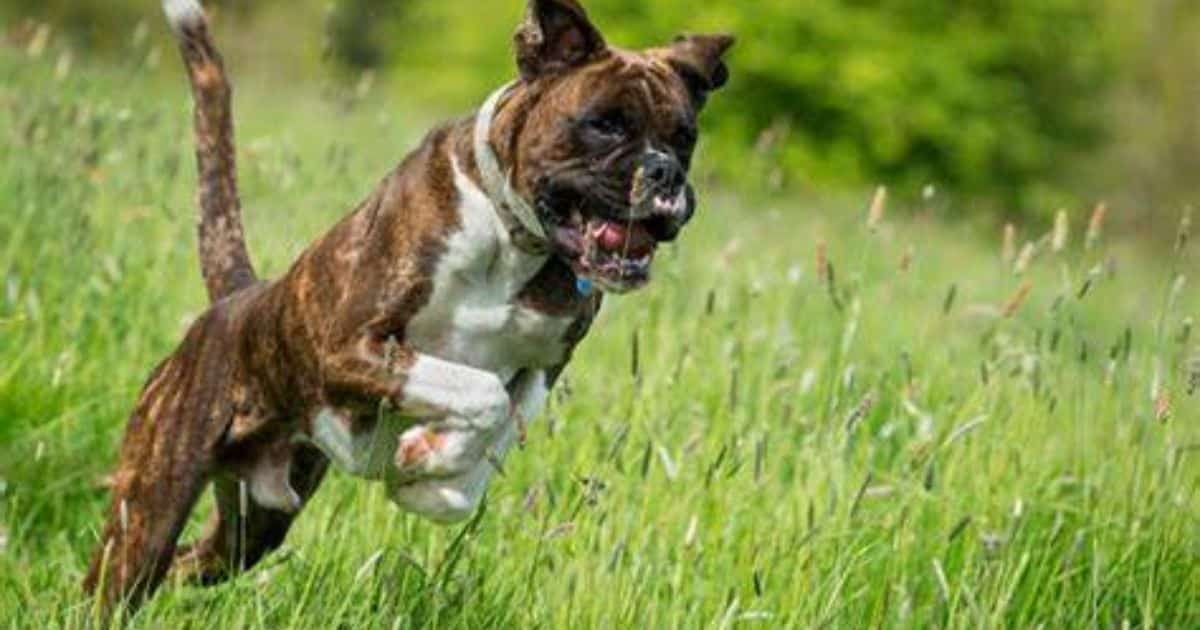
The Boston Boxer is a cross between the Boston Terrier and the Boxer. This mixed breed combines the stocky, muscular build of the Boxer with the compact size of the Boston Terrier. Boston Boxers typically stand 15-25 inches tall and weigh 30-65 pounds. They have a short, smooth coat that can come in various colors like brindle, fawn, or black. These dogs tend to be energetic, playful and loyal. They make great family companions when provided with regular exercise and early socialization.
The Boston Boxer is not formally recognized as a breed by major kennel clubs. As a crossbreed, they can inherit health issues common to both Boxers and Boston Terriers like brachycephalic syndrome, patellar luxation, and heart conditions. Their moderate grooming needs and adaptability make Boston Boxers popular urban pets.
Related Post : Dg Breeds Make a Boxer
18. Valley Bulldog

Valley Bulldog:
| Characteristic | Description |
|---|---|
| Origin | Canada |
| Lifespan | 10–12 years |
| Height | 12–15 inches (at the shoulder) |
| Weight | 50–65 pounds |
| Size | Medium |
| Coat | Short, smooth coat |
| Color | Brindle, fawn |
| Temperament | Friendly, social, loyal |
| Exercise Needs | Moderate |
| Trainability | Intelligent, trainable |
| Grooming Needs | Low |
| Common Health Issues | Hip dysplasia, respiratory issues |
19. Banter Bulldogge
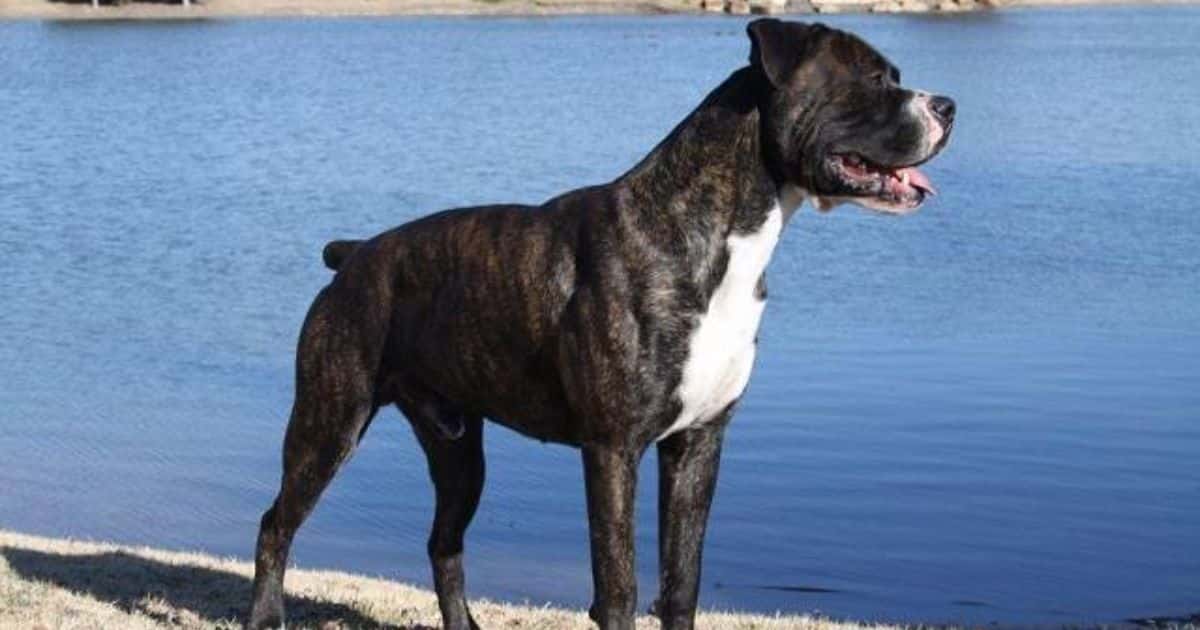
The Banter Bulldogge is a relatively new and rare breed known for its muscular build, friendly demeanor, and versatility. Bred to be a family companion, this breed possesses a balanced combination of strength, agility, and a gentle temperament.
| Origin | United States |
| Lifespan | 10–14 years |
| Height | 18–25 inches at the shoulder |
| Weight | 50–80 pounds |
| Coat | Short, smooth, and dense |
| Color | Various colors, often brindle or fawn |
| Temperament | Friendly, loyal, affectionate |
| Exercise Needs | Moderate to high |
| Grooming | Low maintenance |
| Trainability | Intelligent and eager to please |
| Common Health Issues | Generally healthy breed, but may be prone to hip dysplasia and allergies |
20. Victorian Bulldog
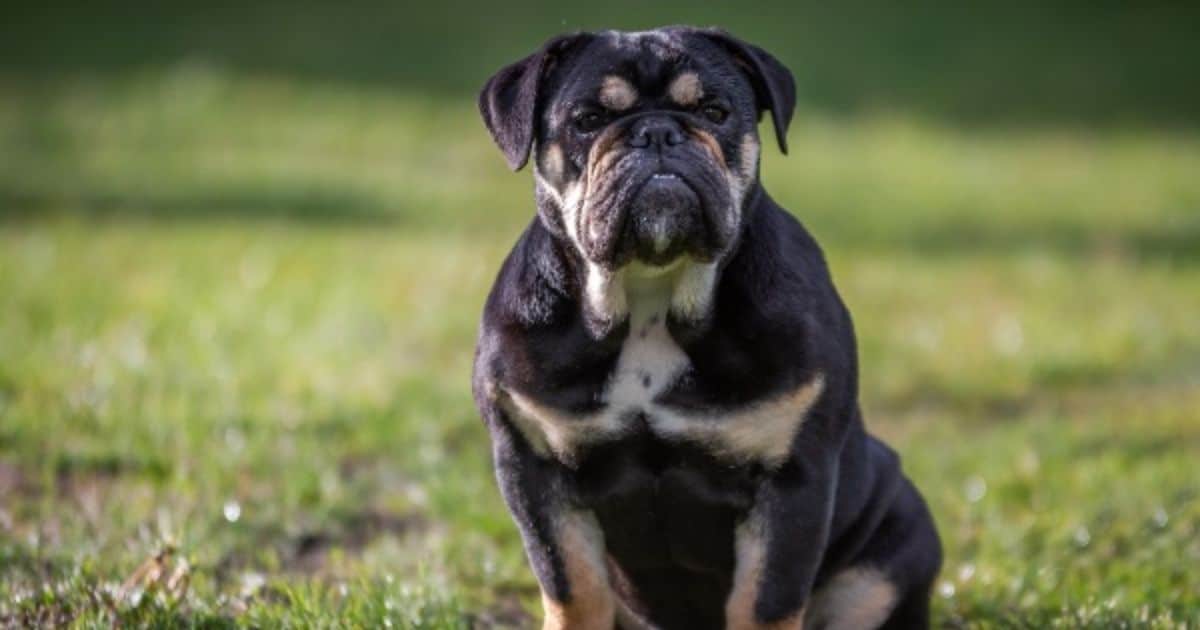
Victorian Bulldog:
The Victorian Bulldog is a medium to large-sized breed known for its muscular build and distinctive appearance. Bred primarily as a companion dog, this breed is valued for its gentle and affectionate nature, making it an excellent family pet.
| Origin | United Kingdom |
| Lifespan | 10–12 years |
| Height | 18–20 inches (at the shoulder) |
| Weight | 55–75 pounds |
| Temperament | Gentle, affectionate, and loyal |
| Coat | Short, smooth, and fine |
| Colors | Fawn, brindle, pied |
| Exercise Needs | Moderate to low |
| Grooming | Low maintenance |
| Training | Responds well to positive reinforcement |
| Health Concerns | May be prone to hip dysplasia and cherry eye |
| Special Considerations | Sensitive to heat, may snore due to their brachycephalic nature |
What Benefits Come With Having A Boxer?
Boxers make wonderful family pets and provide many benefits. They are very friendly, playful, and affectionate towards their owners. Their nature makes them great with children. However, they do require daily exercise and play time as they are high energy dogs. Their coats are smooth and glossy and need only occasional brushing. Their larger size also makes them good watchdogs as they will bark to alert their family of any strangers. Their loyalty and protectiveness ensure they will watch over the home and family. Overall, boxers bond closely with their owners and provide good companionship.
Is a Boxer Necessary?
While boxers can make loving family pets, they may not be necessary for all households. They are considered a working breed and need regular opportunities to burn off their energy through activities and exercise. Their size and strength may be too much for some families with small children or limited space. The coat also requires some care to prevent matting. For busy households or small living spaces, a lower energy dog may be a better choice. However, boxers thrive on human interaction and do best in homes that can commitment to providing them with attention and activity every day.
Frequently Asked Questions (FAQ’s)
Are Boxers hard to train?
Boxers are intelligent but can be stubborn. Positive reinforcement training works best. They need early socialization and obedience training.
Is it true that Boxers are prone to certain illnesses?
Yes, Boxers are prone to cancer, heart conditions, hip dysplasia, and eye problems like cataracts. Regular vet checkups are important.
Can Boxers adapt to apartment living?
Yes, with enough exercise and stimulation. Daily walks and play will prevent boredom. Boxers can thrive in apartments with proper training.
How dangerous are boxer dogs?
Boxers are not typically aggressive, but their size and strength mean proper training and socialization are essential. Like any large dog, they can be dangerous in the wrong hands.
What are the downsides of boxers?
Boxers are prone to certain health issues, have a shorter lifespan, are messy drinkers, and are gassy. They can be stubborn and need plenty of exercise. Boxers may not do well being left alone for long periods.
Conclusion
